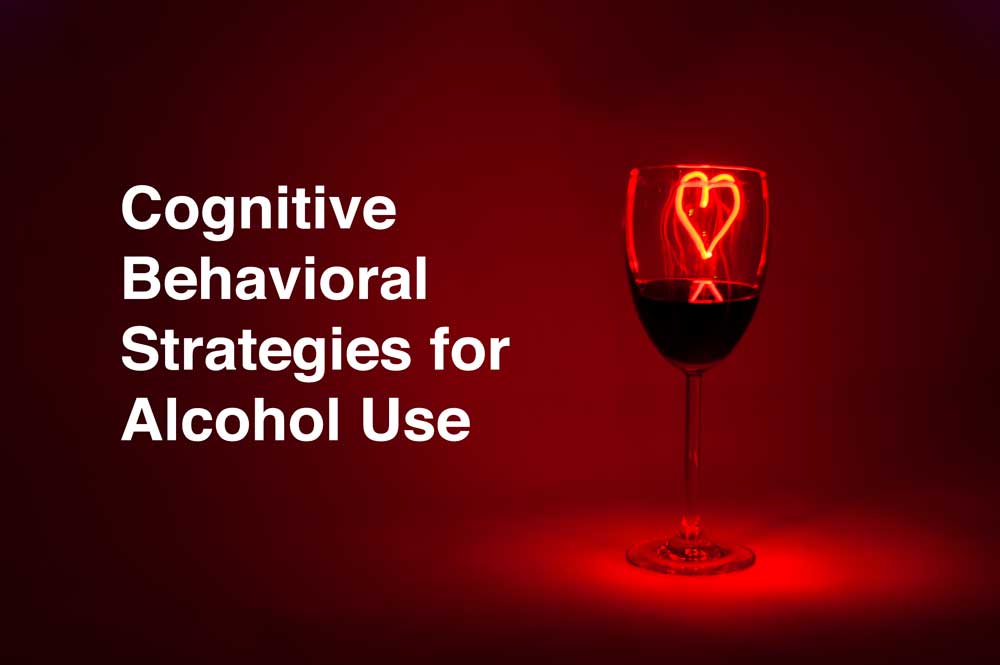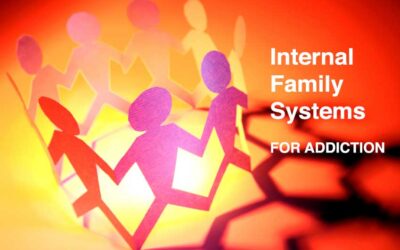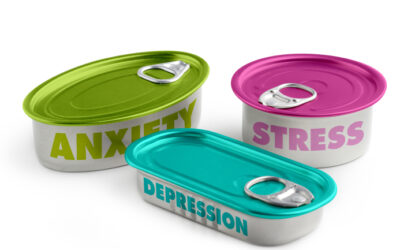Do You Have a Drinking Problem?
Drinking is an ever-present part of our culture and can certainly be done in a way that is responsible and adds value to your life. For some, however, drinking eventually takes over their life and leads to more problems than benefits. A person may gradually increase the frequency or amount they drink, may drink less to have a good time and more to cope with feelings, may develop urges or cravings whenever they don’t drink, may drink to the point where they make a fool out of themselves or damage their reputation, or may find it difficult to not drink even though it negatively impacts their job, their relationships, or their own health. In such cases it might behoove a person to engage in a structured and intentional effort to curb their drinking or perhaps even stop drinking altogether.
Fortunately a therapeutic treatment has been developed that you can largely implement on your own.
In the following article I would like to share 8 impactful strategies to reduce or stop your drinking that you can start implementing today. All strategies have been taken from Cognitive Behavior Therapy for Substance Use Disorder, also known as CBT-SUD, a skills based approach to substance use which is used in many substance use treatment centers across the world.
8 Cognitive Behavior Skills to Reduce Your Substance Use:
1. Understand the Nature of the Urge to Drink:
The first place to start when considering reducing or stopping your drinking is to understand more about the nature of the urge to drink. One way to do so is to comprehend the following facts:
- Cravings are time-limited: Most of the time when we have an urge for something whether it be a sweet tooth, an anxious need to ensure we locked the door, or a desire to drink, we simply satisfy the urge. What this means is that we never get to study what happens if we just let the urge persist. What we would discover then would be that the urge eventually goes away. In fact rarely does an urge last more than 15 minutes. Being equipped with this knowledge means that whenever you feel the urge to drink you can simply set a time for 15 minutes and find a way to pass the time, then you will probably be in the clear.
- Cravings are like waves: Like waves, cravings initially increase in intensity until they reach their crest. After this happens they break against the shore and wash back out. Knowing this about urges means that you can come to expect that their intensity will peak and eventually lessen to the point of no longer being there.
- Cravings happen more frequently the more you give in to them: In the beginning it takes a lot of discipline to resist an urge, but as you gain practice not giving in to them they start to become a lot less frequent. Satisfying an urge is like giving milk to a stray cat. If the cat expects you to give it milk it will come back more often. If it experiences that you don’t it will eventually stop coming by. What this means is that it will be a lot harder to not drink when you first try to stop, but will get a lot easier the longer you abstain from drinking.
2. Practice Urge Surfing:
A good practice that seeks to capitalize on this understanding of urges is the practice of urge surfing. If the urge is like a wave that moves inside only to eventually dissipate, then this means we can witness it and feel it until it goes away. This practice referred to as urge surfing is simply a commitment to experience the urge without acting on it. What we will notice if we do so is that the urge consists of many components that we can simply step back from so they don’t take a hold of us. For example, we may notice: permission-giving thoughts (“I could sure use a drink right now”), physical sensations (a racing heart as we fantasize about drinking), a positive expectation (a drink will make me feel more social), an emotion (feeling down or anxious – hence the desire to drink), or a behavior (going down the alcohol aisle in the grocery store). Whatever your urge might consist of – if you can study it for a period of time – you will get to see that it eventually loses strength and washes back out.
For an urge surfing practice have a look at the following link:
3. Identify Your Triggers:
The urge to drink might seem haphazard, but if you really set out to monitor when and where it happens you will usually start to see some predictable patterns. This is why as a first step to stopping or reducing drinking, we recommend you keep a log of when and where you have an urge and write down what is going on in that moment. Each person will have their own unique triggers, but they will usually be quite predictable. Sometimes the trigger is simply an association with a situation and drinking, for example, watching a sports game. At other times the urge will be a predictable external trigger, such as dealing with difficult people, or not being able to go to sleep. At yet other times it will be an internal trigger, such as feeling down, being worried, or ruminating about negative memories from the past. Whatever your unique triggers are, first step in conquering them is to understand what they are. Urge monitoring is best done in real so you can actually remember the specifics of each situation when you have an urge. Simply keep a log on your phone or keep some scratch paper in your pocket and begin to keep track. Write down the date and time of the urge, some notes about what is going on (the situation), rate the urge in terms of its intensity (0-100%), and write down how you responded or coped with the urge.
Click on the link below to download an urge monitoring card:
Of course when you understand the patterns of your urges you will better be able to plan ahead to avoid the urges altogether or think of alternatives to drinking that would be effective in each situation. Knowing these things ahead of time will help you be prepared to give in to drinking as you will already have a coping plan in place.
4. Challenge Distorted Thoughts:
A big part of the urge to drink are the thoughts we have about the urge. Some of these may be fearful thoughts (“If I feel the urge it will overwhelm me and I can’t do anything about it”). Others may be permission-giving (“I have had a long day today so I deserve a drink” or “Nobody will know if I just have 1 drink”). To not just let these thoughts go unnoticed is a big part of understanding and conquering the urge to drink. Being fearful or indulgent of your urge does not give you enough distance to the urge to manage it. If you are fearful you will probably end up suppressing it until such a time that the urge simply becomes too strong and breaks through the walls of your defenses. Giving yourself permission on the other hand obviously also doesn’t help you resist the urge. A way of these alternatives is to keep a thought record where you simply write down each thought you become aware of when you have an urge. This, first of all, helps you catch the thought, instead of simply letting it operate without your conscious awareness. Second of all, it allows you to challenge the thought.
Try using the following Five-Column Thought Record developed specifically for urges:
In the second column you write down your thought. In the third column you write down the feeling the thought gives rise to (for example: anxiety, excitement). In the first column you identify the situation that gave rise to the thought (people, places, or activities that triggered the urge). You then examine the thought for accuracy and try to challenge the assumptions of the thought by looking at it from other perspectives to come up with an alternative thought. And finally, in column 5, you notice what changes in how you feel or want to act after you tell yourself the more accurate and realistic thought you just formulated.
For example, if I catch myself telling myself “nobody will notice if I just have one drink”, I might note that telling myself this makes me feel excited, but I might also challenge the thought by questioning the assumption that ono one will notice. Afterall, I will notice, and I am reducing or stopping my drinking for my own sake, and not for others. My alternative thought might therefore be “Even though no one would notice if I had a drink, I would notice and I wouldn’t like myself”. The feeling or outcome of this thought might now change from excitement to disappointment, but perhaps also pride for sticking to my principles and acting based on long-term benefit rather than short-term gain.
5. Develop a Coping Plan:
Whenever you identify your triggers and know that you might have to be in a situation that will trigger you it might make sense to develop a coping plan. A coping plan helps you think through a triggering situation ahead of time. This means that you won’t leave your reaction to chance bur rather know in advance what options you will have available to deal with the situation. An example might be that you have to attend a wedding and know that might feel socially awkward and want to drink to make you feel at ease. One option, of course, could be to skip the wedding altogether, but this might make you look like a bad friend and you may therefore instead decide to go but plan ahead to avoid you will end up drinking .
To create your coping plan have a look at the following link:
This coping plan format asks you to think through the following points:
- If you get triggered to want to drink, how can you leave the situation or change the environment (if you are at a wedding, it might mean get some fresh air outside, go to the restroom, seek out another guest with whom you feel comfortable and less awkward)
- Delay or put off decision to drink for a certain amount of minutes to see if the urge goes down or the anxiety changes
- Identify ways to distract yourself from the trigger or the urge (for example, commit to finding one person at the party to ask some conversational questions taking the focus of yourself, look at some mantras you can save on your phone such as “Nothing lasts forever. This too shall pass”, or save a picture of a person that gives you comfort. Of course, you need to spend some time really thinking these through and selecting some that you think might work.
- Call someone (have someone in mind you can call and talk to about your anxiety or urge to drink and let that person know you might be texting or calling ahead of time)
- Remind yourself of your success at not drinking up to this point
- Remind yourself of the positives of not drinking and the negatives of drinking
- List ways you will reward yourself if you succeed at not drinking
You could of course add your own points to this list. The main idea is that are you are not going into a triggering situation without already having a plan for how to cope.
6. Identify Social Pressure Situations:
One very important aspect to think through when wanting to reduce or stop drinking are all the types of situations that might happen in which others will be drinking or someone might offer you a drink. We call these social pressure situations. Some of these will be indirect such as simply going out for dinner and noticing that others are ordering wine. Others will be more direct, such as having someone offer you a drink. Either way you should spend time cataloguing the different types of social situations you might find yourself in that will involve some kind of pressure or temptation to drink.
You can use the following link to list them out and think about how you are going to cope:
> View Social Pressure Worksheet
General coping strategies could be to: avoid altogether, have an escape strategy in place, identify a support person you can talk to, and finally rehearsing how to say “no”.
7. Practice Refusal Skills:
One of the challenging aspects of trying not to drink is being able to say “no” if a drink is offered. On the surface of things this doesn’t seem very hard, but many people have trouble with this. It can be difficult to say no for several reasons. Once you say no you may draw attention to yourself and feel like you have to explain yourself. Your friends or family may not expect you to say no so it might seem odd all of a sudden that you are refusing a drink. Some people also might worry that saying no will make others judge them or will make them appear like a party-pooper or downer. Whatever the fear or concern might be, it helps to practice what you are actually going to say, and how you might respond to any follow up questions your refusal might bring about. Best strategy for refusing a drink is to keep the refusal simple and direct, and to be prepared to state it a couple of times if needed.
Good refusal: “No thank you. I’m not drinking anymore” (simple, direct, unambiguous)
Bad refusal: “No thank you, not right now, I have had a lot of problems with drinking too much” (leaves door open for drinking later, begs more questions about problem drinking)
Another technique to practice is called the “broken record” technique. This technique simply states that if someone begins to ask questions about your refusal, you simply reiterate the same refusal.
For example:
Friend: Hey, drinks on me tonight!
You: No thank you I am not drinking anymore
Friend: What do you mean you are not drinking anymore, just have one it’s on me…
You: No thank you I am not drinking anymore
Friend: What’s up with you, you never had a problem drinking before…
You: Yes I know, but I am not drinking anymore
For all its simplicity, many people who are new to refusing drinks in this way will experience some degree of discomfort and stress with having to insist on their desire not to drink in the face of multiple offers. This is normal and precisely why it might be food to practice with someone ahead of time, so you aren’t learning only when you are put on the spot…
8. Increase Pleasant Non-Alcoholic Activities:
The final point I want to make in helping you in curbing your alcohol consumption is that you need to find other ways to have a good time than through activities that involve drinking. If not drinking simply means saying no to going out to avoid social pressure to drink, not being able to enjoy a sports game on TV with a beer, or having fun at social gatherings with other people who drink, it is unlikely that you will be successful at reducing or stopping your drinking in the long-term. Rather than focusing on what you can’t do because you are not drinking, you instead have to take active steps to introduce new enjoyable activities into your life that do not involve drinking. This might mean making the effort to increase your social activities with people who don’t drink, or it might be introducing some new activities or hobbies that don’t involve drinking. If you have been a heavy drinker for quite some time you might find that much of your life has gradually come to revolve around drinking, or that you have given up hobbies or interests that don’t involve drinking in some way. For this reason it will serve you well to make an intentional plan to introduce new non-drinking activities or social events into your life.
One starting point might be having a look at the following menu of pleasurable activities:
> View List of Pleasurable Activities
As a related point, one of the biggest risks for returning to drink is too much idle time, boredom, or non-pleasurable activities. Keeping yourself busy by trying new things is therefore one of the best things you can do for yourself if you want to get your drinking under control.
Change Your Relationship with Alcohol Today:
So there you have it: 8 cognitive behavioral strategies to curb or stop your drinking. For some these strategies might best be implemented with a therapist who can keep you accountable and guide you through the many risks and temptations. For others it might be necessary to do a complete reset by going to a residential treatment for 30-45 days before trying these strategies on your own or with a professional. Whatever the case might be for you I hope you have gotten to understand more about the challenges that lie ahead and feel equipped to achieve your own unique goals related to your relationship with alcohol.













